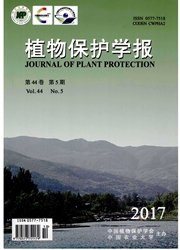

 中文摘要:
中文摘要:
十字花科芸苔属甘蓝型油菜(Brassica napus)在角果发育成熟过程中,因角果开裂种子散落引起产量损失最低达20%左右,最高可达50%左右。模式植物拟南芥在角果形态和开裂机制方面与甘蓝型油菜具有相似性,角果开裂主要与果瓣、胎座框和果瓣边缘层的细胞发育有关。通过对拟南芥角果发育期问基因对果瓣、胎座框和果瓣边缘层的识别和发育进行综述,明确了拟南芥角果发育和开裂的基因调控机制,提出了从模式植物到大田作物甘蓝型油菜抗裂角育种的新策略。
 英文摘要:
英文摘要:
It has been reported that 20% of harvest are lost as a result of fruit development and disperse in maturity and losses up to 50% were estimated in seasons when adverse weather conditions delayed harvesting in rapeseed (Brassica napus L.). The model plant, Arabidopsis thaliana, is the same family with rapeseed and has similar fruit structure and dehiscence mechanism. An intricate process which is related with the fruit development and dehiscence had been clear in Arabidopsis thaliana. Three tissues which were valve or pod wall, replum and valve margin were associated with fruit disperse in Arabidopsis thaliana during fruit development and maturity. A series of genes had been identified to regulate three tissue's specify and development. This paper reviewed the mechanism of genes control fruit dehiscence in Arabidopsis and provided tools to engineer shatter-resistant pods to prevent seed loss in rapeseed.
 同期刊论文项目
同期刊论文项目
 同项目期刊论文
同项目期刊论文
 期刊信息
期刊信息
